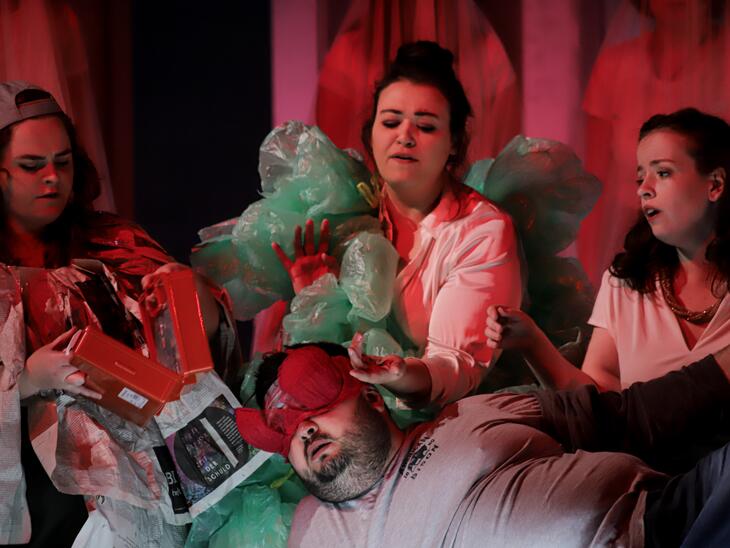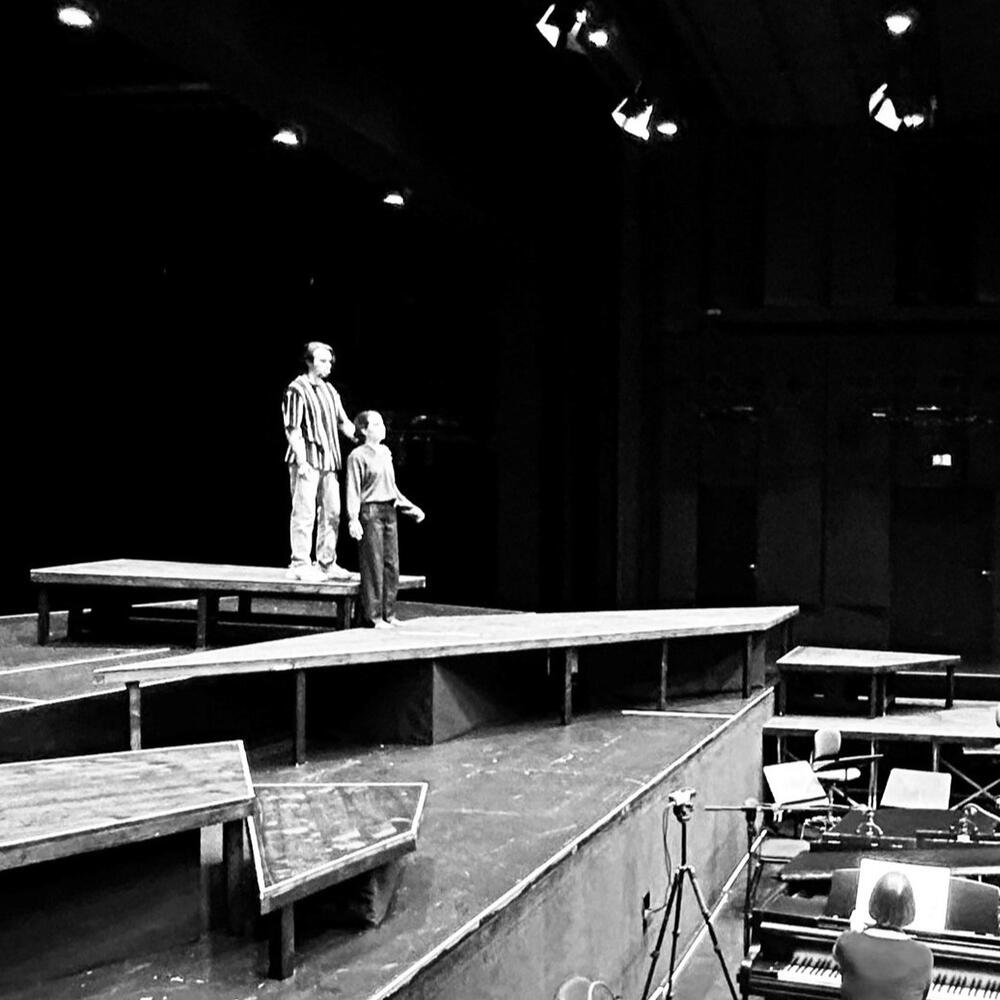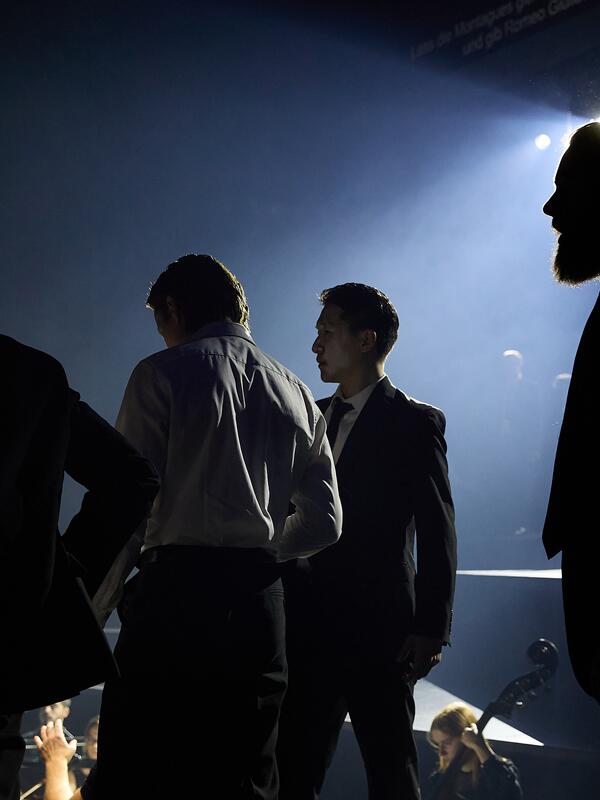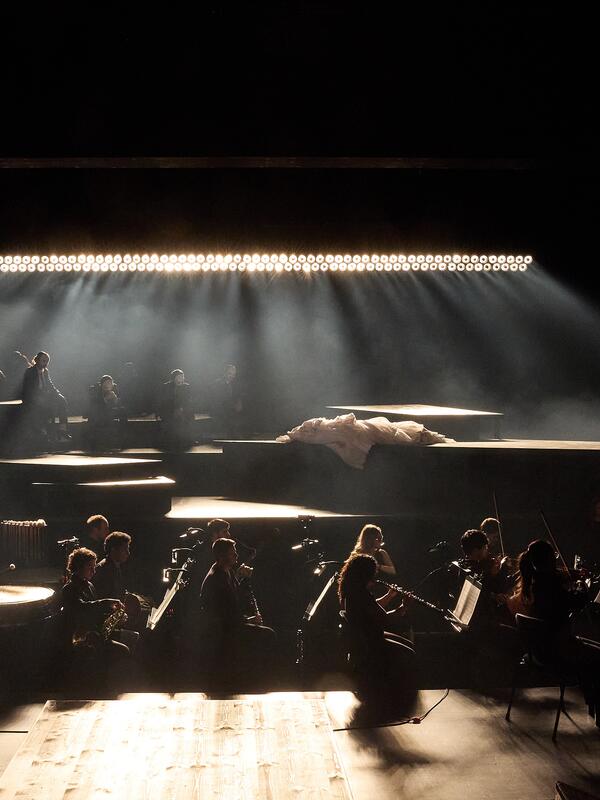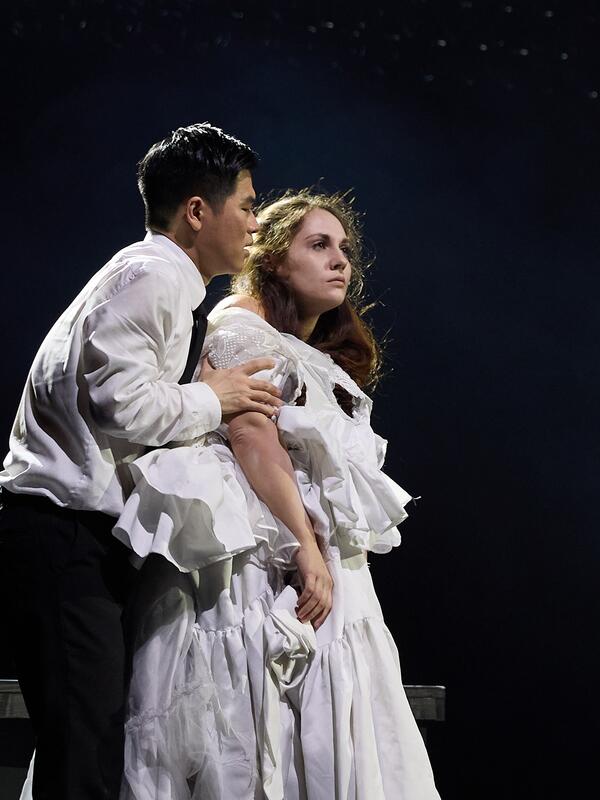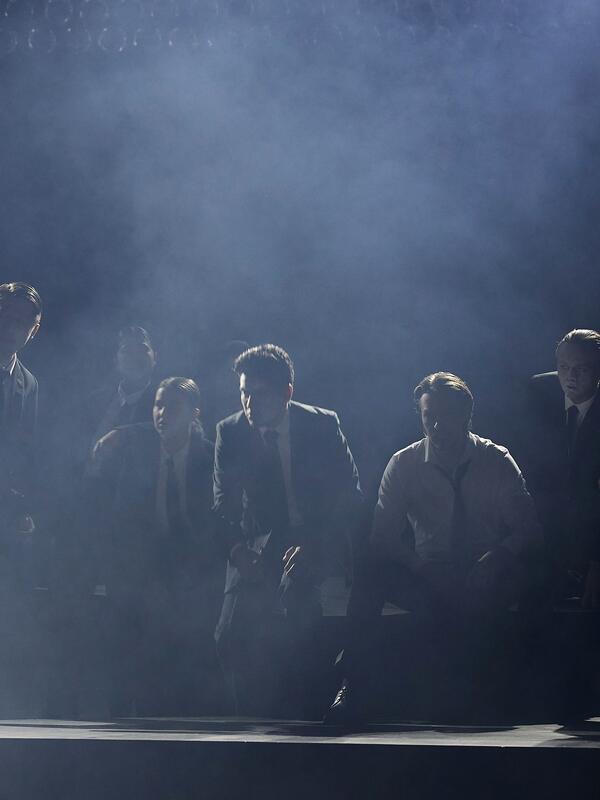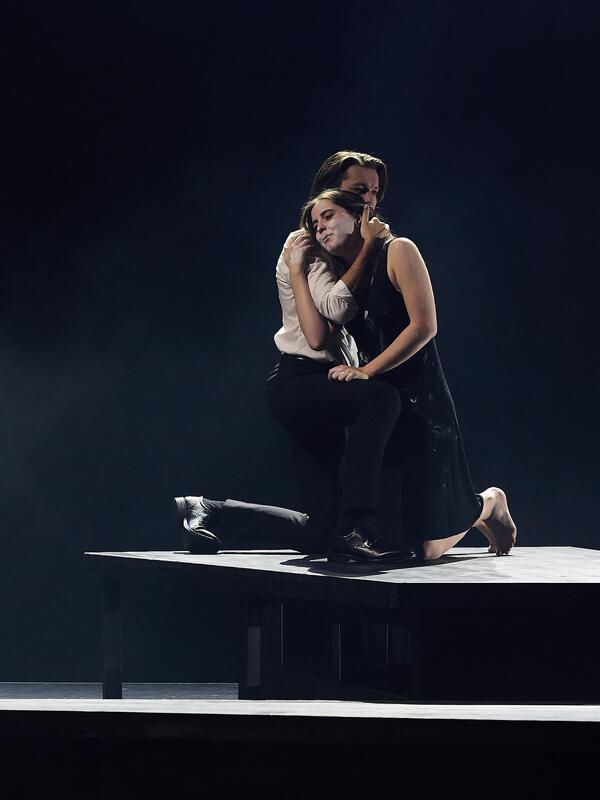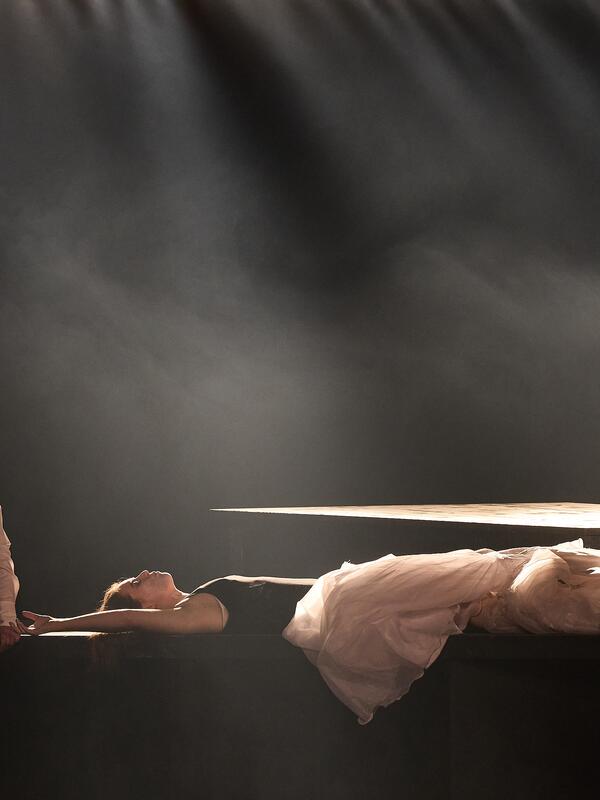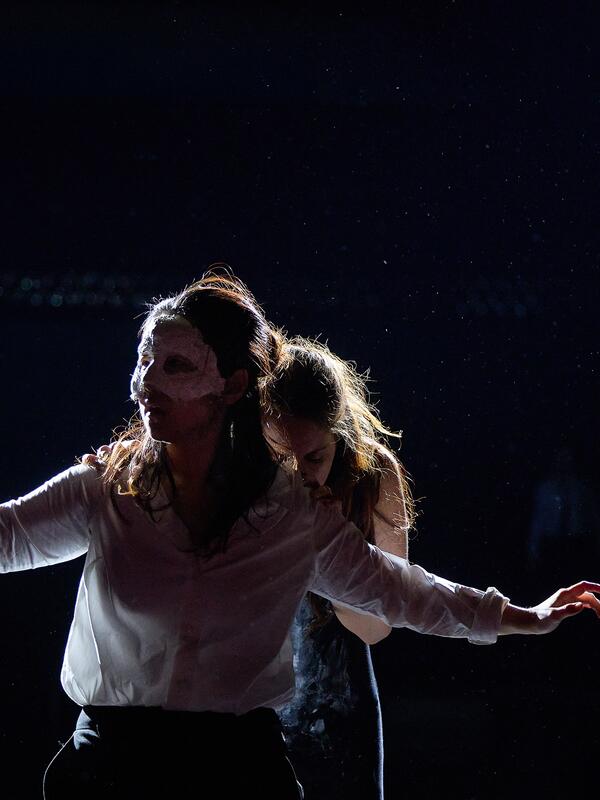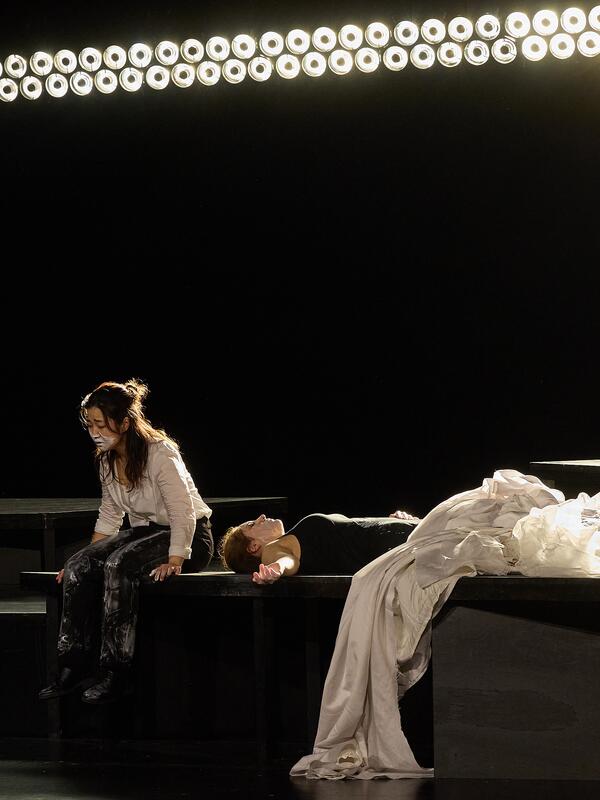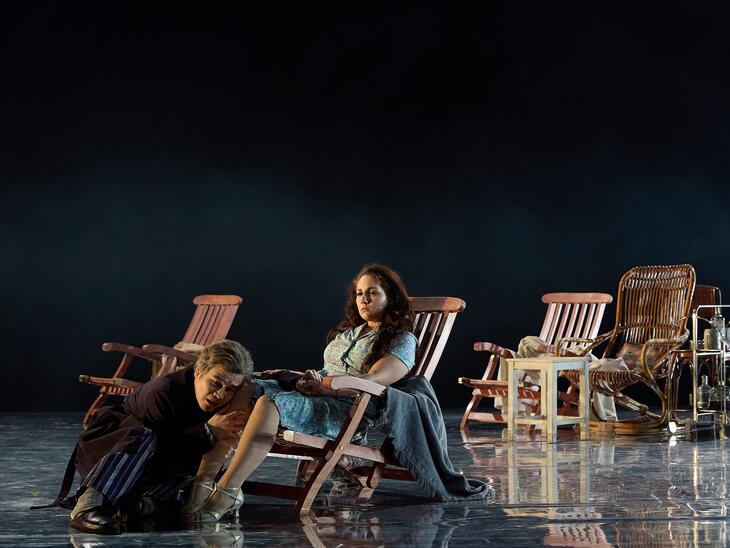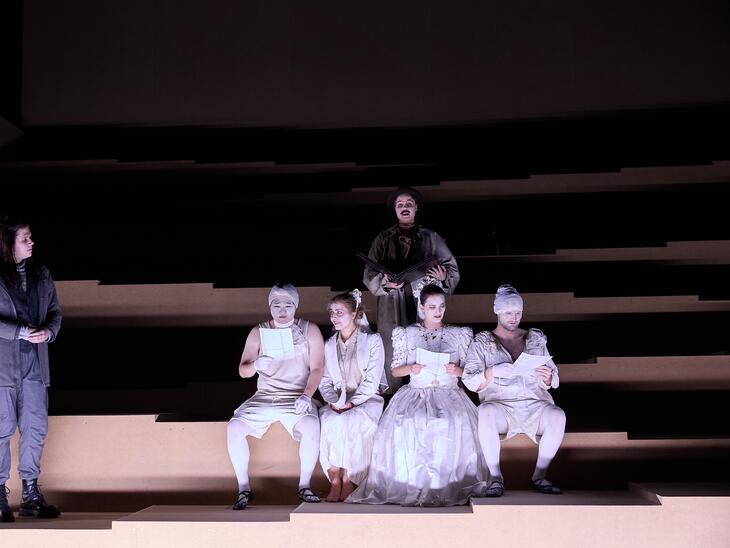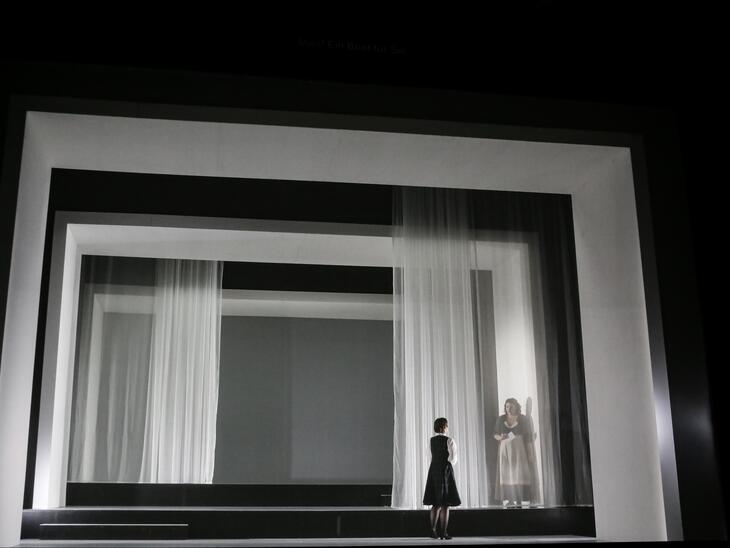Tragedia lirica by Vincenzo Bellini
Libretto by Felice Romani
"You will lie there pulseless, cold as ice. They will summon their relatives and doctors – and, in short, everyone will believe you to be dead, so much so that they will feel compelled to lay you in the family tomb by evening."
— Matteo Bandello
The bloody feud between the Capuleti and Montecchi families makes the love between Giulietta and Romeo impossible, culminating in the tragic death of the young lovers. Set designer Laura Trilsam extended the stage into the auditorium, creating a claustrophobic maze of interconnected platforms that thrust the conflict of the two families directly into the audience. Eschewing historical weapons or modern props, the production opted for a stark, minimalist setting, underlining the timelessness of its themes. Vincenzo Bellini composed his sixth opera in 1830, completing it in just six weeks for the Teatro La Fenice in Venice. Like Shakespeare, Bellini’s librettist, Felice Romani, drew inspiration from the same literary sources, setting the story in 13th-century Verona. Bellini’s melodies, ethereal in their beauty, imbue the tragedy with an atmosphere of dark, romantic transcendence.
Director Alexander von Pfeil portrayed Giulietta as a young woman crushed by the mechanisms of male-dominated power structures. Her suffering extends beyond political intrigue to physical violence, even from her beloved Romeo. Von Pfeil’s staging captured these dynamics with meticulous detail while allowing the performers the space to fully realise their vocal artistry. The cast responded with exceptional vocal performances that resonated deeply with the audience.
Gernot Sahler conducted the University Mozarteum Chamber Orchestra in Francis Griffin’s reduced orchestration. Sahler’s precise yet sensitive direction amplified the dramatic intensity of the opera, highlighting its emotional depth. Outstanding contributions came from the orchestra’s horn, flute, and clarinet soloists, whose magical moments of sound brought brief light to the otherwise sombre events.
The student choir of the University Mozarteum added further richness, delivering clear, precise vocals that enhanced the emotional layers of the production. Together, the performers and creative team crafted an opera that was as haunting as it was beautiful, breathing new life into Bellini’s tragic masterpiece.
